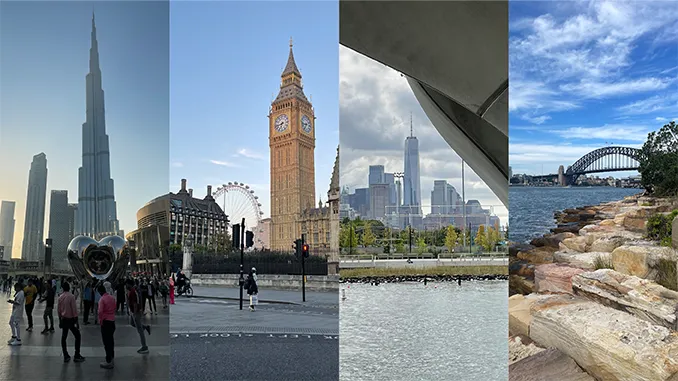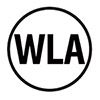
As design firms evolve, so do their ambitions. Initially, their focus is on local projects and typologies, but over time this develops into a desire to explore new markets, expand into different project typologies, and take on new challenges that push the boundaries of creativity and capability.
Recently, this has become a necessity as geographical markets have slowed and typologies have shifted due to cycles and trends. This change necessitates reflection on current strengths, followed by the development of a strategy with a clear understanding of the risks and rewards. This guide outlines the considerations every design firm should explore before venturing beyond their current market, assisting leaders in making informed decisions about where and how to grow next.
Why?
When deciding to enter a new market or typology, you need to determine why you want to explore the possibilities available. If it is purely to increase revenue, then your firm will not be better off in the end and may waste valuable time and money. Are you going because you believe it would benefit the firm? Are there employees who have experience in the market or typology? Does the market or typology provide the opportunity for training and broadening the skills of the team?
Deciding the why is essential as it will guide the where, when and the amount of investment required.
Investment & Time
When entering a market or new typology, the firm must establish its willingness to invest a certain amount of funds and time. This is vital for gauging the success of the expansion. If this is not defined, it can become a burden or create pressure or disinterest within the firm.
The time commitment often outweighs the importance of financial investment. It’s essential to recognise that growth can take many years, and it is not instantaneous. Building a new business requires time, and the team and management must share an understanding of the expected timeframes and goals, such as when we expect to win the first project or when we expect to break even.
Which market or typology?
When entering a new market or typology, there is much to consider. There are many opportunities available, but there is a need to narrow the possibilities through an evaluation process that may include questions like:
- Is the market stable? What is the current market growth?
- Does our team have experience in the market or typology?
- Are our clients working in this market or typology?
- Do we have collaborators in this market?
- Is our brand known in this market?
- What is our service offering? Can we offer the same services in this market?
- What is the process for winning work? Private or Public tenders?
- Who are our competitors?
- Are there experienced and talented people available?
- Are there language or cultural barriers?
These are the initial exploratory questions to narrow the possibilities of markets or typology. After this, you need to consider the various business operational issues, including:
- What are the country (client) regulatory requirements? (company registration, taxes, insurances, workplace, standards, etc.)
- Do you require local company directors?
- What is the banking sector like? How hard is it to transfer money to the home company?
- What are local salary expectations? What are the market-standard employee benefits?
How to enter a market?
There are numerous ways to enter a market or typology. Making a decision based on one factor, such as explosive growth, other firms are going there, or it’s an exciting city, increases the possibility of failure. Therefore, it is in your firm’s interest to conduct a thorough analysis of each option and identify where the best chance of success lies.
Some of the ways that you can enter a market include:
- Design Competitions are a possibility to enter a new market, but are a long shot at success
- Collaboration with other design industry firms (architects, engineers, etc.)
- Working alongside your home country’s or local trade department or missions
Explore your current market
Recognising that there is a level of investment (time and funds) required to establish a new market or typology, it may be wise at this point to take a step back and reassess your current business. Your firm should consider whether you have thoroughly explored your existing market (clients, typology) and identified any growth opportunities in your area. While it may not seem as thrilling, it could ultimately prove to be a more suitable long-term solution for expanding your business.
Seek advice
Initially, you may seek advice from local designers to determine whether you are genuinely interested. You’ll encounter horror stories and various issues, but it’s essential to grasp both the challenges and opportunities before entering a market.
I would encourage all firms (regardless of size or experience) to seek advice about entering a new market or typology. You may engage a consultant at the start, during, or after the exploratory process, when you have made a shortlist of possibilities. A consultant will often guide you through a detailed process to work through all the options based on data, research, and experience, assisting you to avoid the pitfalls.
Entering new markets or types of projects goes beyond simply pursuing profits; it involves developing your business, pushing your team, and setting yourself up for sustainable relevance and strength in the long run. Growth opens possibilities for new perspectives and unlocks doors for greater collaboration, along with new ideas and experiences. The process will take time, commitment, and perseverance to navigate these opportunities; however, the rewards can transform both the firm and its people.
This article was initially presented as part of ArchidoGlobal seminar in Shanghai, China. Held by ArchiDogs and World Landscape Architecture.
Cover Image Credits:
Left to Right
1. Burj Khalifa & Dubai Mall Heart – Dubai | Image Credit: Damian Holmes
2. Big Ben and London Eye – London | Image Credit: Damian Holmes
3. View of One World Trade Center (Freedom Tower) from Little Island (by MNLA) – New York | Image Credit: Damian Holmes
4. View of Sydney Harbour Bridge from Barangaroo Reserve (Design by PWPLA & JPW) | Image Credit: Damian Holmes
DISCLAIMER: This article is for educational purposes only. The content is intended only to provide a summary and general overview of matters of interest. It’s not intended to be comprehensive nor to constitute advice. You should always obtain professional advice appropriate to your circumstances, before acting or relying on any of that content. This advice is general in nature.

Be the first to comment